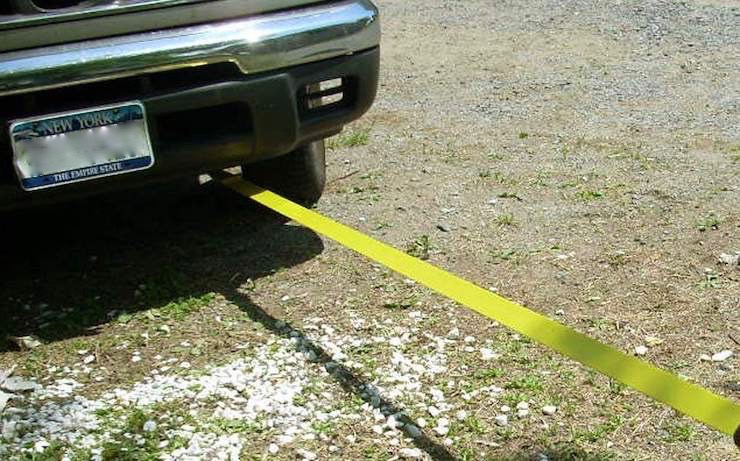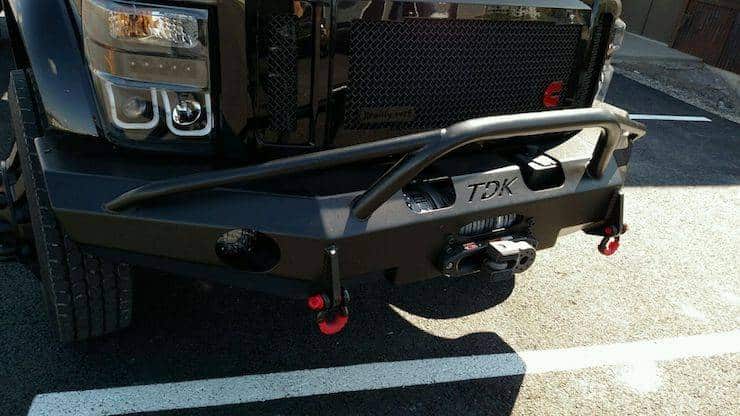Vehicle recoveries look so much easier than they really are. The average person usually thinks that it just involves strapping a vehicle to the stuck vehicle and then pulling it out.
The truth is that in order to recover a vehicle safely and efficiently, there’s more to it than a tow strap and some torque. In fact, recovering a vehicle incorrectly can get pretty dangerous, sometimes even deadly. (By the way, if you like these tips, you might also like to download our free towing ebook here.)
What Could Go Wrong?

Image Credit: Matt Wright
Recovering a vehicle involves thousands of pounds being pulled around. And the vehicle is stuck in sand, mud, or on a slope, there is even more force on the line. So it’s easy for something to go terribly wrong. For instance:
- A line could snap and hit someone.
- If the line isn’t attached to one of the vehicles properly, it could be damaged. Bumpers and even entire bodies have been ripped off of stuck vehicles. (Ah’em.)
- If the line between both vehicles isn’t straight, one of the vehicles could flip over.
Unsafe vehicle recoveries have resulted in serious injuries and even deaths. Even if everyone comes out unscathed, there’s still the possibility that a truck got damaged and would need to be repaired. It’s always important to make safety your #1 priority when recovering a vehicle. Knowing what not to do will go a long way in ensuring safety during a vehicle recovery. Here are five “don’ts” you should always keep in mind:
1. Never Attach A Line To A Trailer Hitch Ball
Using proper attachment points is incredibly important in a vehicle recovery. If you don’t use proper attachment points, something could snap off the car and injure someone.
While trailer hitch balls are designed to tow heavy loads, they’re still not strong enough to pull out a stuck vehicle. It’s not uncommon for a trailer hitch ball to break off when it’s used as an anchor point. And if it does break off, it will go flying through the air with a lot of speed.
2. Never Attach To Suspension Components Or Axles
We also highly advise against attaching a line to suspension components or axles. Axles and suspension components are strong, but they are not designed for pulling out a stuck vehicle. Using these parts as an anchor point will result in thousands of dollars of repairs.
3. Don’t Ignore The Manufacturer’s Specs
Recovering a vehicle essentially means using a vehicle to pull many thousands of pounds over terrain that only adds to the pull. A lot of force is involved, so you want to make sure that the recovering vehicle comes out unscathed. The best way to do this is to ensure that all of the parts involved, such as bumpers and clevis mounts, are rated to handle the weight involved in recovering a vehicle.
4. Never Use A Recovery Strap Instead Of A Tree Strap
If you need to enlist the help of a tree to recover another vehicle, it’s important to use proper tree straps. Typical recovery straps can stretch 10%-15%. If you use a recovery strap instead of a tree strap, it can stretch out and rip the bark off of the tree. They can also add additional recoil to the winch rigging, which could be dangerous.
5. Don’t Let Anyone Stand Nearby
Even if you take all the safety precautions you could think of, you should still not let anyone stand near either vehicle, the anchor points, or the lines. It’s always better to be safe than sorry.
The Ideal Bumper For Safe Vehicle Recovery

When it comes to recovering a vehicle, the right bumper makes all the difference. You want a strong, durable steel bumper with clevis mounts welded into it. Throttle Down Kustoms makes some of the best steel bumpers on the market. TDK bumpers have clevis mounts for shackles, which allow you to safely connect a tow line or winch line to your bumper.
TDK bumpers are specifically designed for Chevrolet, Dodge, Ford, GMC, and Toyota trucks. Check out the TDK steel bumpers here!
